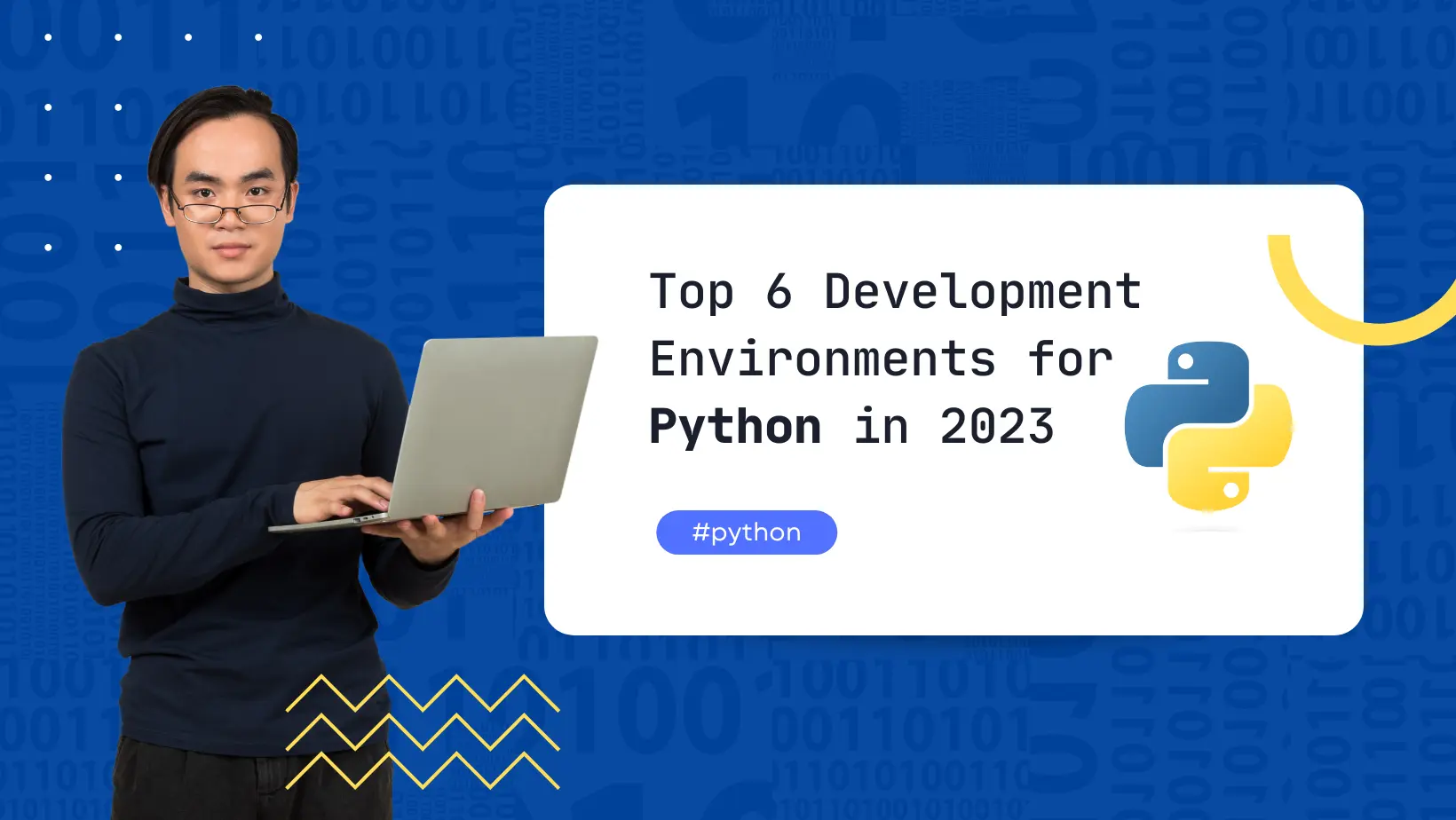An integrated development environment (IDE) allows you to run code written in different programming languages.
Python being one of the most used development languages, there are unsurprisingly many Python IDEs on the market.
Discover in this article all kinds of Python IDEs, both open-source and paid, compatible with all Python frameworks.
1. IDLE

Named after Eric Idle from the British comedy troupe Monty Python, IDLE is quite minimalist. However, it offers everything you need to develop properly in Python.
Coded in Python itself, IDLE uses the Tkinter toolkit for its graphical interface. Starting IDLE will open a Python shell, just as if you were starting Python from the terminal. You can play with code snippets, with keywords and colored results.
Your code will be highlighted appropriately and automatically indented, with a configurable indentation level. IDLE supports the use of spaces or tabs for indentation and can automatically convert between the two. In addition, it can indent multiple lines at once.
IDLE does not have any project management functions, but it does have a powerful debugger that displays the call stack as well as the status of local and global variables.
2. eric

Like IDLE, eric (lowercase) is named after Eric Idle and is also written in Python. Although Python is its main focus, the tool supports other languages.
It supports essential tasks like code completion, brace matching, a built-in class browser and a powerful debugger.
Although the interface looks busy, eric proves to be very efficient for serious coding: it has, for example, a hex editor, a SQL browser and an icon creator.
It supports unit testing and can debug multi-threaded and multi-processor programs.
3. PyDev

PyDev is a Python IDE running under Eclipse, which itself is a very popular open source IDE for various programming languages, and enjoys a wide range of plugins available to complement its functionality.
PyDev comes with a set of basic but essential coding features, such as code auto-completion, debugging, coding templates, as well as a browser for testing code.
It offers an integration option for working with the Django Python framework, as well as support for Jython and IronPython.
As it is open source, it is free to use and provides enough functionality for basic to intermediate programming.
4. PyCharm

PyCharm is a Python IDE for professional developers.
Offered by JetBrains, it is a paid program that includes an impressive set of tools, such as:
- intelligent assistance,
- web development frameworks,
- scientific tools (like IPython Notebook, Anaconda, NumPy, Matplotlib…),
- cross-technology development
- and a huge collection of development tools.
Considered the best Python IDE for developers, PyCharm supports more than 50 plugins of various kinds.
5. Thonny

Thonny is an IDE developed at the University of Tartu in Estonia, and is itself written in Python. It features a powerful debugger, ideal for learning the ins and outs of coding without worrying about how breakpoints work.
Thonny will automatically indent while you code, which will be useful for anyone new to Python (the language uses indentation to delimit functions, loops, classes, clauses, etc). It will automatically complete your code and provide the correspondence between parentheses and brackets. It also features highlighting of any syntax errors.
Ideal for beginners, it is a bit difficult to install for a neophyte. Too bad!
6. Atom

Let’s finish this list with Atom, “the hackable text editor of the 21st century”. Maintained by the social coding megalith GitHub, it can do just about anything you can imagine. And if it can’t do it, surely someone is working on a plugin to fix it. Atom has a huge community working for it.
The tool allows collaboration on real-time coding projects via the Teletype package. Coders who prefer their application to be light will hesitate in front of the 400 MB (including dependencies) of its installation. However, even on a modest system, it works well and all the features Atom provides justify the investment in disk space.
Contrary to what one might think, its clean interface makes it a very user-friendly IDE and suitable for beginners.
FAQ
why python ?
Python is a popular programming language because it is easy to learn and use, yet powerful enough to handle complex tasks. Some of the reasons why Python is a popular language for development are:
- Simple and easy to learn : Python is known for its simplicity and readability, making it easy for beginners to learn and understand. Its syntax is straightforward and easy to read, which helps to reduce the cost of program maintenance.
- Versatile : Python is a versatile language that can be used for various purposes, including web development, data analysis, artificial intelligence, scientific computing, and machine learning.
- Large community : Python has a large and active community of developers who contribute to its development and provide support for others. This community has developed a vast range of libraries and modules that make Python more powerful and useful.
- Cross-platform compatibility : Python is a cross-platform language, meaning it can run on different operating systems like Windows, Linux, and macOS. This makes it an excellent choice for developing applications that need to be deployed on multiple platforms.
- Extensive libraries and frameworks : Python has an extensive library of built-in functions and modules that simplify coding and development. It also has a vast range of frameworks that help to speed up the development process, including Django for web development and TensorFlow for machine learning.
Overall, Python ease of use, versatility, and large community make it an attractive choice for developers across different fields and industries.
Comparison of the features, pros, cons, and price of Atom, Thonny, PyCharm, PyDev, eric, and IDLE:
| Comparison | Atom | Thonny | PyCharm | PyDev | eric | IDLE |
| Language | Multiple languages | Python | Python | Python | Python | Python |
| Features | Code highlighting | Code highlighting | Code highlighting | Code highlighting | Code highlighting | Code highlighting |
| Code completion | Code completion | Code completion | Code completion | Code completion | Code completion | |
| Git integration | Debugger | Debugger | Debugger | Debugger | Debugger | |
| Package management | Variable explorer | Code profiling | Refactoring | Version control | Auto-indentation | |
| Terminal | Syntax checking | Unit testing | GUI builder | GUI builder | Code profiling | |
| Snippets | Code coverage | Code analysis | ||||
| Pros | Customizable | User-friendly | Feature-rich | Large community | User-friendly | Easy to use |
| Lightweight | Easy to learn | Robust | Extensible | Extensible | Beginner-friendly | |
| Free | Free | Free Community Ed. | Free and open source | Free and open source | Free | |
| Cons | Less Python-focused | Limited features | Expensive Pro Ed. | Slow at times | Outdated UI | Limited features |
| Limited support | No multi-language support | |||||
| Price | Free | Free | $199/year Pro Ed. | Free | Free | Free |
RELATED POSTS :




